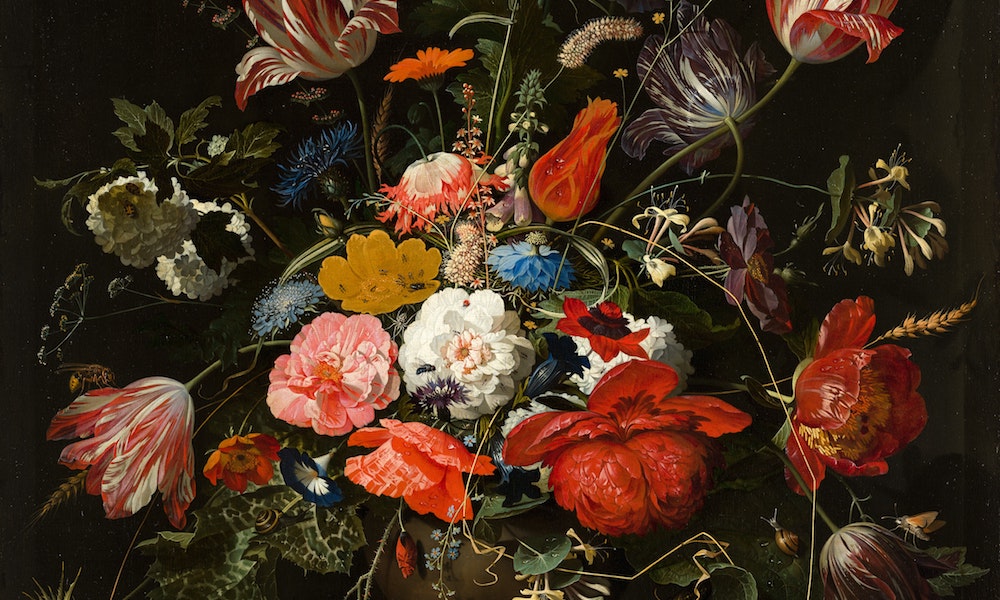
23 May How to Start My Art Collection? A Primer For New Collectors
Whether you are looking to acquire art for decorative purposes, as an investment, or for love and passion for the arts, building a strong art collection requires time and knowledge. Upon first sight, the art world may seem like an intimidating and daunting space that is tough to crack, however, we want to assure you that it is anything but. The artworld is a wonderful place to explore, with plenty of artists of diverse practices to discover and learn more about. Whether you want to buy your first major work, or simply want to enhance your experience at a fair or gallery opening, all it takes is an open mind and some curiosity. We understand that buying your first artwork can be an intense task, especially if you don’t know what to buy, where to buy, or how to buy within your budget. If you are looking for a contemporary statement piece, or want to invest in art for your home, there are many ways to build an impressive art collection without breaking the bank whilst simultaneously having a rich, rewarding experience.
Why Collect Art?
There are numerous reasons to start an art collection. Individuals may start to collect as a form of investment, a means of collecting a precious piece of history, or as a way to support the arts – the list goes on. Collecting art is a very subjective experience, but it is also a great way to showcase aspects of your personality and make a statement about who exactly you are. Drop those preconceived notions you have on art collecting – it is not just for the wealthy and famous. Many new art collectors today start on a small budget as they learn and navigate the art world. There can’t be a better example than Herbert and Dorothy Vogel. Once described as “proletarian art collectors,” this couple amassed a collection of over 4,782 works while working as civil servants in New York City. Their collection, consisting mostly of minimalist and conceptual art, has been called one of the most important post-1960s art collections in the United States. What truly set them apart from what most may consider the stereotypical art collector is that they only bought pieces they personally liked and could carry home on the subway or in a taxi and displayed and stored their collection in their rent-controlled one-bedroom apartment on Manhattan’s Upper East Side.
What You Need to Know to Get Started: Set a Budget
Before you even start looking for works to collect, the first step for new art collectors is to establish a budget. This budget will allow you to decide what is available for you to buy and where. Start small and gradually increase your budget as you grow your collection, confidence, and understanding of art. A budget of $1,000 or less could be a good starting point to start trying out media and artists. Consider your purchasing patterns. Do you intend to buy one original artwork worth $1,000 every month or multiple lesser-priced pieces? A good rule to follow is quality over quantity since your budget is not a static indicator and will change in the future.
Define Your Goals
What are your intentions with this art collection? Defining your motivation or goals for buying art will have a huge impact on the kind of collection you end up building. A good approach is to buy what you love and brings you joy. You will have to live with the art you purchase, so it is better to invest in something that will inspire you every day. Creating and sticking to your budget is important but that doesn’t mean settling for something you don’t love. In the same breath, don’t devalue an artwork because it is priced below your perceived price of “good art”. If you really like the artwork, buy it, whether the price is $50 or $500. The more expensive doesn’t necessarily mean the better the work. Many collectors start collecting for aesthetic reasons, for example, to enliven their living room. Art can no doubt transform a space and create beautiful interiors, but what happens when their collection outgrows their space? As art collections grow bigger, art collectors need to think about the logistics, installation, insurance, storage and conservation of their works. It is always useful to have a few reliable companies in mind just in case. Many people think of buying art as an investment. While it is a considered line of thought, it’s critical for new buyers to understand that there are no guarantees when it comes to investing in art. If a return on art investment is your primary driver for collecting art, you will have to look at mid-career or established artists which means more expensive works.
Do Your Homework
Now that you have set your budget and defined your goals, it’s time to do some homework. To ensure that you have an enjoyable experience collecting art, immerse yourself fully in the art world and do some research! Learn about the various types of artworks, mediums, and styles; read up on artists, visit museums and galleries, or find artworks you love on social media (Instagram, Facebook, Pinterest, etc.). When you see more art, you will start understanding the difference between various techniques, mediums, and styles used by different artists. Most importantly, you will train your mind and eye to identify the types of art you love and enjoy more than others. This will give you a better idea of what kinds of works you envisage in your collection. You may find yourself gravitating towards abstract painting, prints, sculpture, or black and white photography.
Sourcing art: Art Fairs & Galleries
There are many places to discover and find art you love. A more traditional method is to attend art fairs, go to exhibition openings and visit galleries. These are excellent places to find artists and artwork to build your collection. Don’t be afraid to ask questions, make connections, and read artists’ biography pages. The best way to gain access to insider tips is to speak with other like-minded collectors at these events.
Browsing Online
Another way to find artwork for your collection is to browse art online through reputable websites. A benefit of buying online is that it saves the buyer the time and effort of asking for price lists from multiple galleries and studios with limited inventories. You can take your time, browse artworks from all over the world, buy your favorite original art, and have it delivered to your doorstep.
Visit galleries
A pleasure perhaps only second to art museums, galleries provide the absolute best experience to purchase art. Digital images cannot provide the actual color, touch, look, or even smell of artwork as it will feel in your home or office. Even seeing it in person, the artwork may not look and feel the same in your home, because light, shapes, and contrast play constant tricks on our eyes. Meanwhile, talking to a person is an invaluable opportunity to benefit from their expertise, tastes, and market knowledge. This hands-on learning experience can be extremely refreshing for an aspiring art connoisseur.

